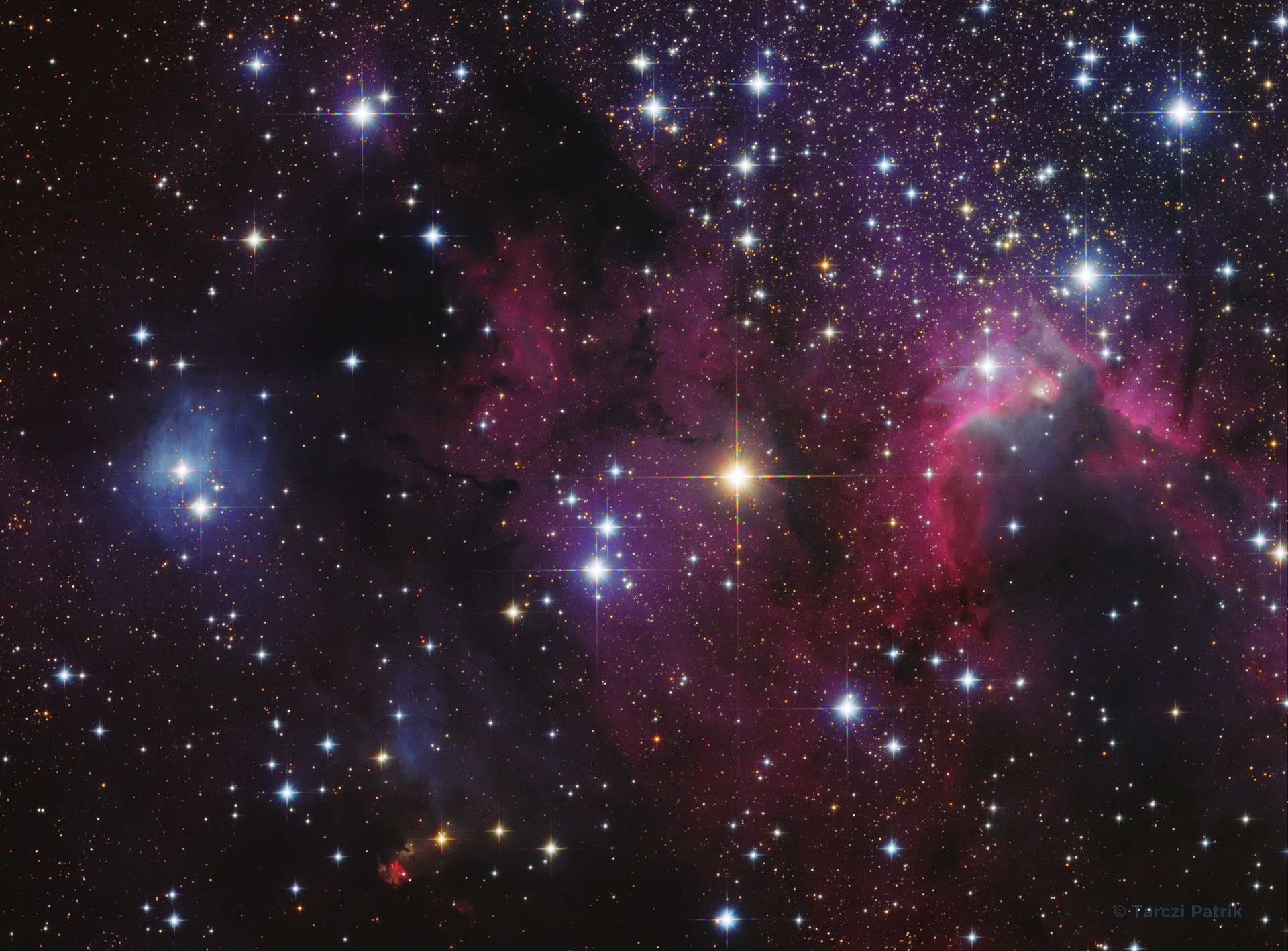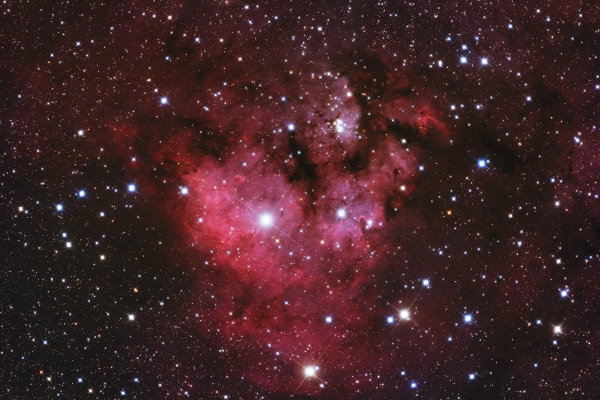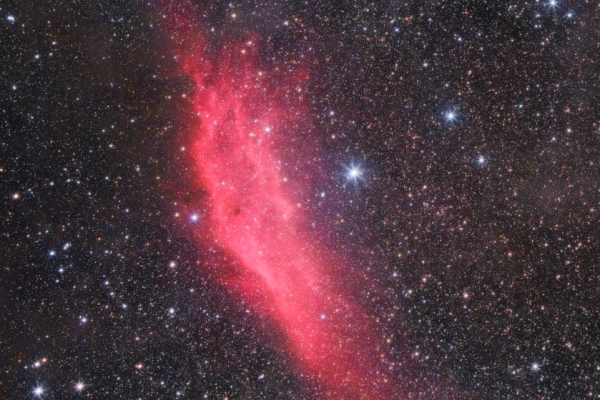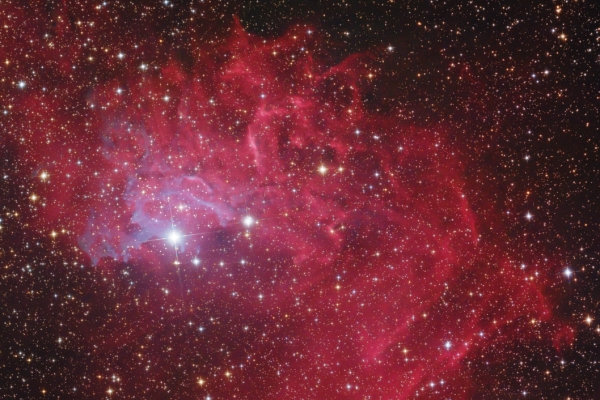The entrace of the sky's cave
Sharpless-155

Technical data
| Instrument: | 173/700 Newton-astrograph (ZsIO), SkyWatcher comacorrector F/4 |
| Camera: | Atik One 6.0 |
| Filter: | Baader 1,25" CCD filter set, LRGB-Ha |
| Mount: | SkyWatcher NEQ6 Pro Synscan (modified) |
| Guiding: | Lacerta M-Gen autoguider, OAG |
Image data
| Exposure time: | L: ~35*10 mins, R: 10*10 mins, G: 10*10 mins, B: 12*10 mins, Ha: 17*10 mins |
| Location, date: | Hungary, Izsákfa; 2015. September-November |
| Transparency: | 6/10 |
| Temperature: | 12 °C |
| FWHM: | 2.40" |
| Processing: | CCDStack, Registar, Photoshop |
Description
This colorful skyscape features the dusty, reddish glow of Sharpless catalog emission region Sh2-155, the Cave Nebula. About 2,400 light-years away, the scene lies along the plane of our Milky Way Galaxy toward the royal northern constellation of Cepheus. Astronomical explorations of the region reveal that it has formed at the boundary of the massive Cepheus B molecular cloud and the hot, young, blue stars of the Cepheus OB 3 association.
The bright rim of ionized hydrogen gas is energized by the radiation from the hot stars, dominated by the bright blue O-type star above picture center. Radiation driven ionization fronts are likely triggering collapsing cores and new star formation within. Appropriately sized for a stellar nursery, the cosmic cave is over 10 light-years across. Source: apod.nasa.gov
Technical data
| Instrument: | 173/700 Newton-astrograph (ZsIO), SkyWatcher comacorrector F/4 |
| Camera: | Atik One 6.0 |
| Filter: | Baader 1,25" CCD filter set, LRGB-Ha |
| Mount: | SkyWatcher NEQ6 Pro Synscan (modified) |
| Guiding: | Lacerta M-Gen autoguider, OAG |
Image data
| Exposure time: | L: ~35*10 mins, R: 10*10 mins, G: 10*10 mins, B: 12*10 mins, Ha: 17*10 mins |
| Location, date: | Hungary, Izsákfa; 2015. September-November |
| Transparency: | 6/10 |
| Temperature: | 12 °C |
| FWHM: | 2.40" |
| Processing: | CCDStack, Registar, Photoshop |
Recommended photos

The Devil's Head Nebula
Towering pillars of cold gas and dark dust adorn the center star forming region of Sharpless 171.

The complex of California Nebula
A wide-field photograph of the California Nebula and its surroundings. The connection of the cosmic dust and the bright nebula can be seen.

The Flaming Star Nebula
A runaway star lights the Flaming Star Nebula in this cosmic scene. The Flaming Star Nebula's billowing interstellar clouds of gas and dust located in constellation Auriga.


